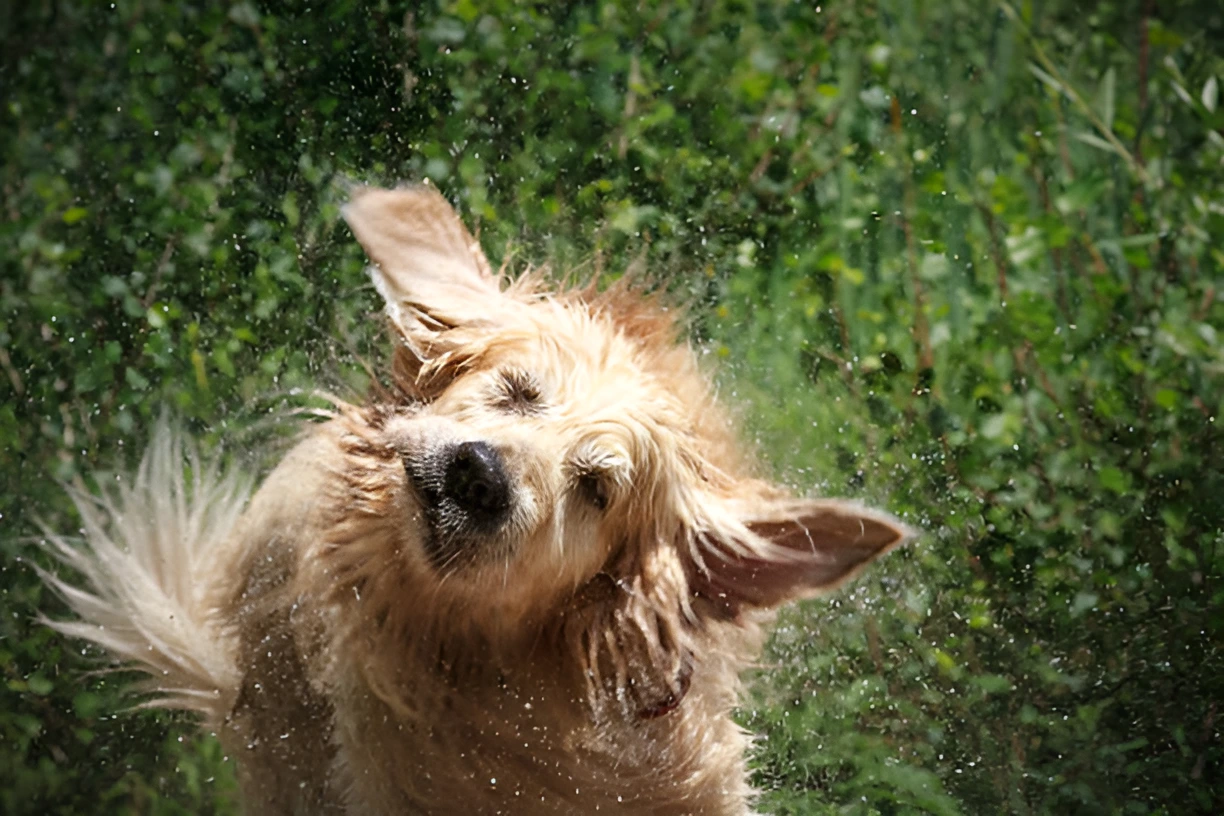Yes, a dog can get wet every day, but it’s important to ensure proper drying and care to prevent skin issues and other health problems. This article explores the implications of daily exposure to water for dogs, the benefits and potential risks, and best practices for keeping your dog healthy and happy.
Dogs love to play in water, whether it’s splashing in puddles, swimming in lakes, or simply enjoying a bath. While getting wet can be a fun and enriching experience for dogs, it’s essential to understand the potential impacts of daily exposure to water. This comprehensive guide will delve into the benefits and risks of frequent wetting, how to properly care for a wet dog, and tips for maintaining their health and well-being.
Benefits of Daily Water Exposure
1. Exercise and Enrichment: Swimming and playing in water provide excellent physical exercise and mental stimulation for dogs. It can help keep them fit, reduce boredom, and improve their overall well-being.
2. Cooling Down: During hot weather, water activities can help dogs cool down and prevent heatstroke. This is especially beneficial for breeds with thick coats or those prone to overheating.
3. Bonding Time: Water activities can strengthen the bond between you and your dog. Whether it’s a bath or a swim, these moments can be enjoyable and create positive associations with water.
Potential Risks of Daily Water Exposure
1. Skin Issues: Consistently wet fur can lead to skin problems such as hot spots, fungal infections, and dermatitis. Dogs with thick or double coats are particularly susceptible to these issues.
2. Ear Infections: Water can easily get trapped in a dog’s ears, leading to infections. Breeds with floppy ears or those prone to ear problems need extra care to keep their ears dry and clean.
3. Hypothermia: In colder weather, frequent exposure to water can increase the risk of hypothermia, especially for small or short-haired breeds. It’s crucial to ensure your dog is properly dried and kept warm after getting wet.
Proper Drying Techniques
1. Towel Drying: Use a soft, absorbent towel to thoroughly dry your dog after they get wet. Pay special attention to areas where water can get trapped, such as under the legs, around the neck, and in the ears.
2. Blow Drying: For dogs with thick or long coats, a blow dryer on a low, cool setting can help speed up the drying process. Ensure the dryer is not too hot and keep it at a safe distance from your dog’s skin to avoid burns.
3. Natural Drying: Allowing your dog to air dry is an option, but it may not be suitable for all breeds or weather conditions. Ensure they are in a warm, dry environment to prevent chills.
Health and Grooming Considerations
1. Regular Grooming: Regular brushing helps remove loose fur and prevents matting, which can trap moisture and lead to skin issues. Grooming also helps distribute natural oils, keeping your dog’s coat healthy.
2. Ear Care: Clean your dog’s ears regularly to prevent infections. Use a vet-recommended ear cleaner and avoid getting water inside the ear canal. Dry the ears thoroughly after water exposure.
3. Skin Checks: Regularly check your dog’s skin for signs of irritation, redness, or infection. Early detection and treatment can prevent more serious health issues.
Best Practices for Water Activities
1. Supervision: Always supervise your dog during water activities to ensure their safety. Be aware of potential hazards such as strong currents, deep water, and slippery surfaces.
2. Hydration: Ensure your dog has access to fresh drinking water, especially during and after water activities. This helps prevent dehydration and encourages them to drink clean water instead of potentially contaminated sources.
3. Safety Gear: Consider using a dog life jacket for swimming, especially for breeds that are not strong swimmers or in unfamiliar waters. Life jackets provide buoyancy and added safety.
Conclusion
While dogs can get wet every day, it’s essential to take proper care to prevent potential health issues. Regular drying, grooming, and monitoring for signs of skin or ear problems are crucial. By following these best practices, you can ensure that your dog enjoys the benefits of water activities while staying healthy and happy.
The photo featured below the post headline is Credit: LorenzoPatoia/istockphoto
I hope you find this post helpful and informative. If Yes’ feel free to share it with your friends!
Frequently Asked Questions
Can I bathe my dog every day?
Bathing your dog every day is generally not recommended as it can strip natural oils from their skin and coat. However, getting wet from activities like swimming or playing in water is fine with proper drying and care.
How can I prevent ear infections in my dog after swimming?
Dry your dog’s ears thoroughly after swimming and use a vet-recommended ear cleaner to remove any trapped moisture. Avoid getting water inside the ear canal.
What are the signs of skin issues in dogs?
Signs of skin issues include redness, irritation, itching, and hot spots. Regularly check your dog’s skin and consult a veterinarian if you notice any problems.
Is it safe for dogs to swim in cold water?
Swimming in cold water can increase the risk of hypothermia, especially for small or short-haired breeds. Ensure your dog is properly dried and kept warm after swimming in cold conditions.
What type of towel is best for drying my dog?
A soft, absorbent towel, such as a microfiber towel, is best for drying your dog. It helps remove moisture quickly and is gentle on their skin and coat.

